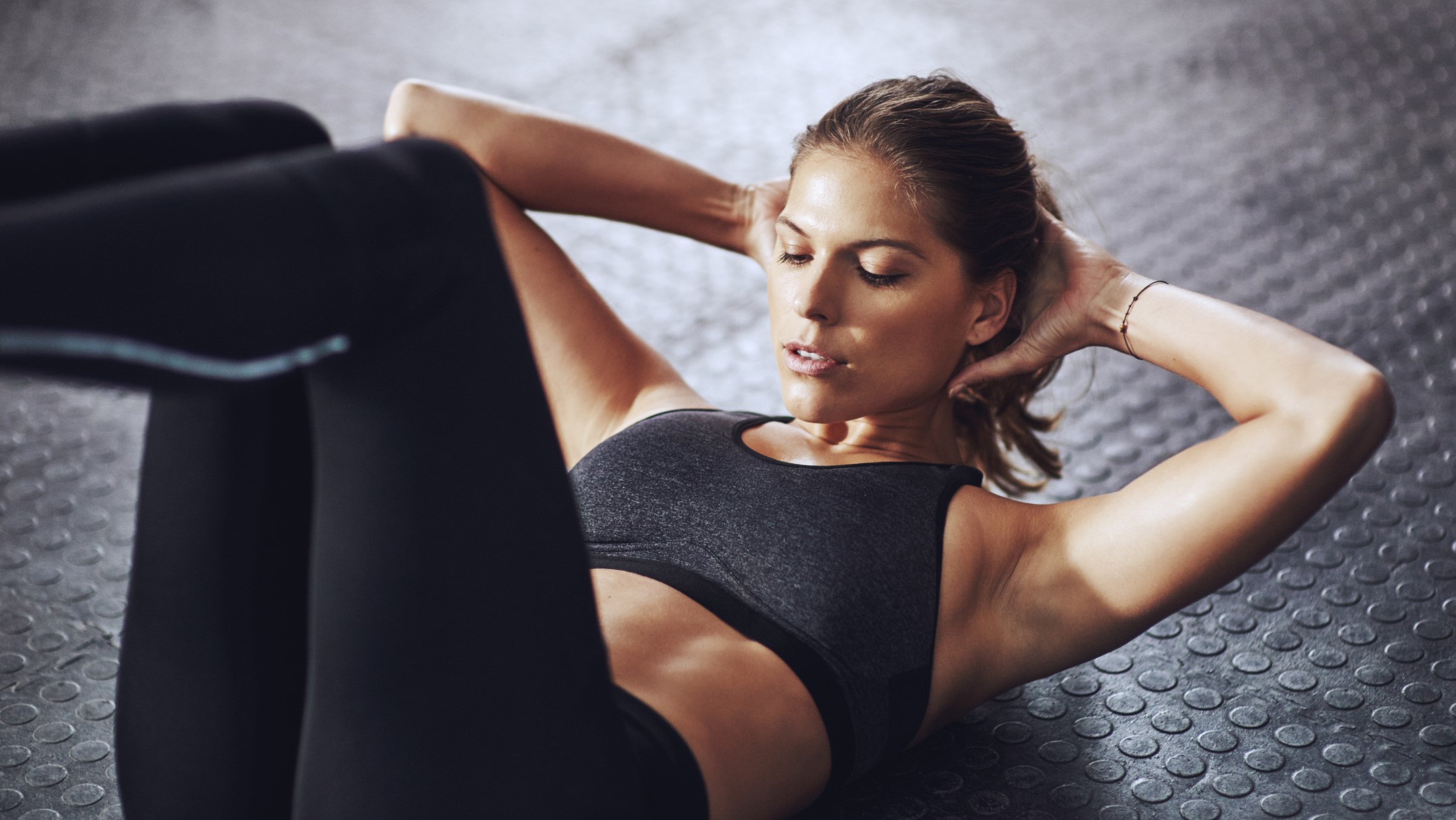Sit-ups vs crunches: Which ab exercise is better?

A strong core is far more than just an aesthetic goal — it can help you run faster, lift heavier weights, and sit with a better posture. “A stronger core provides for a better-supported body so that you can not only protect yourself when you perform daily activities, like picking something off the ground, but also for more strenuous workouts and physical activity”, Robert Cadiz, an instructor at Fiture told Tom’s Guide.
Yet if you’re looking for the best ab exercises to work on your core in the gym, sit-ups and crunches might be top of your list. But which is best? We asked Cadiz to break down the pros and cons of each move to find out more.
It goes without saying, that if visible abs are your goal, spending hours on either move in the gym probably won’t be enough. Visible abs are a product of a low body fat percentage, which can be achieved through a healthy diet, HIIT training, and consistency, not crash diets or hours in the gym. Here’s how to calculate your body fat percentage, and why it matters.
Read on to find out whether sit-ups or crunches should be your go-to ab move, but if you’re looking for more inspiration, here’s what happened when this writer did 30 sit-ups every day for a month, and the exercise that science says is better than sit-ups and crunches at working your abs.
Born and raised in New York City, Rob traded in his 6-year hustle in corporate fashion for the high-energy community of the fitness world. He has experience leading Pilates reformer sessions and a NASM personal training certification with a Women's Fitness Specialization.

How to do a crunch
To do a crunch, start by lying on your back, with your hands resting on the back of your head, and your knees bent, feet flat on the floor. Engage your core and lift your head, neck and shoulders off the mat. Pause, then lower back to your starting position.

What are the benefits of crunches?
“Abdominal crunches will obviously benefit the core in terms of developing a stronger core, but much more than that, you will also see improvement in your mobility and flexibility of the muscles, which can in turn also benefit your posture," Cadiz says.
What are the form mistakes to look out for during crunches?
“Typically crunches are performed on your back with your hands gently behind your ears, lifting your shoulders off the ground and crunching towards your legs/the ceiling,” Cadiz says. “Be on the lookout for hyperflexion of the neck, meaning rounding way too much, as it can put a strain on your neck before a burn on your core! As always, when crunching, it is imperative to keep your back flat on the ground to protect your low back,” Cadiz warns.
Get instant access to breaking news, the hottest reviews, great deals and helpful tips.
Who should avoid doing crunches?
So who shouldn’t be working crunches into their daily core workout? “In my personal opinion, anyone who is a bit more novice to fitness should avoid doing crunches. Although crunches are a great core exercise, they are not the best core exercise,” Cadiz says.
“As your abs are stability and anti-rotation muscles, it would be better recommended to sharpen those skills performing exercises like a plank or a bird dog first to really build and strengthen the deep core muscles that help to protect and stabilize your spine," Cadiz advises. "Once you've understood your body a bit more and can identify and feel your core supporting you, I would take it up and play with crunches because you will have a better idea as to when and how you are actually using the muscles appropriately.” (Read what happened when this writer did 50 bird dogs a day for a week.)
“Separately, new moms should avoid doing crunches given the demand their body has just put on them in birthing a baby. I would also opt for more stability exercises, like planks, bird dogs, and dead bugs,” says Cadiz.
Now, let’s take a look at sit-ups.

How to do a sit-up
You can read more about how to do a sit-up here, but in its simplest terms, start by lying on your back, with knees bent and feet firmly on the ground. Place your hands behind your head, or place each hand on the opposite shoulder, so arms cross over the front of your body, whichever feels more comfortable to you. Slowly lift your upper body off the ground, keeping your chin tucked into your chest as you do so. Lift your body up towards your thighs, so you're essentially sitting upright. Next, slowly lower your body back to the start position.

What are the benefits of sit-ups?
“Similar to crunches, sit-ups will help you improve that core strength,” Cadiz says. However sit-ups have one extra benefit — they “help strengthen your hip flexors and other muscles in your lower body.”
What form mistakes should we look out for?
Like crunches, when performed correctly, sit-ups can be a great ab workout, but when done incorrectly, you can put pressure on your lower back and neck. Here’s Cadiz’s tips on how to get your form right:
1. Avoid sitting all the way up so that you don’t lose too much tension in your core
2. Avoid arching your low back as you rise up
3. Press your hands gently behind your ears, versus your neck, to avoid strain on the neck muscles.
Who should opt for sit-ups over crunches?
“If you're recovering from any lower body issues, sit ups might be a bit more aggressive than a traditional crunch where the legs can remain completely unused,” says Cadiz.
Sit-ups vs crunches: Which is best at working the core
So, which should you opt for during your next ab workout? “I would recommend a strong and slow sit up,” says Cadiz. Unlike a crunch, a slow sit up “will target multiple muscles including the core muscles (transverse, rectus abdominis) as well as muscles in the lower body,” the trainer advises.
“Nonetheless, whatever feels best on your body is the best exercise for you,” he adds. A reminder that what might work for your gym-friend, or that influencer on Instagram might not be right for you and your body. If you’re new to an exercise, you’re recovering from an injury, of you’re experiencing pain when practicing an exercise, it’s worth checking your form with a personal trainer.
Next: I just tried this yoga for knee pain workout — here’s what happened. Also, check out this 13-move ab workout that builds a strong core in 15 minutes.

Jane McGuire is Tom's Guide's Fitness editor, which means she looks after everything fitness related - from running gear to yoga mats. An avid runner, Jane has tested and reviewed fitness products for the past five years, so knows what to look for when finding a good running watch or a pair of shorts with pockets big enough for your smartphone. When she's not pounding the pavements, you'll find Jane striding round the Surrey Hills, taking far too many photos of her puppy.
